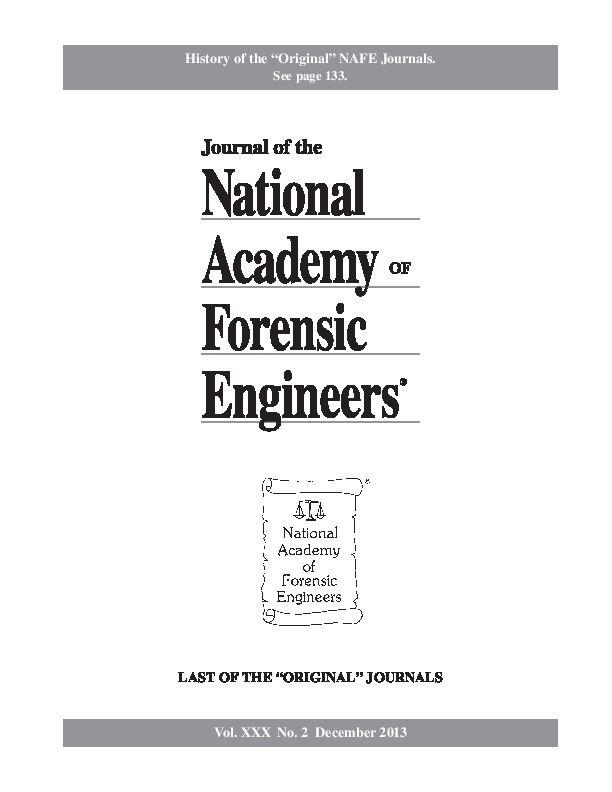Forensic Engineering Investigation Of Sectional Ladder Treestand Failures
DOI:
https://doi.org/10.51501/jotnafe.v30i2.792Keywords:
Treestand, ladder, design, bending, merchantability, ANSI, stress, overload, TMAAbstract
The Purpose Of This Forensic Engineering Investigation Was To Determine The Root-Cause Of Failure Of Three 15-Foot Sectional Ladder Treestands That Caused Injury To Users. All Three Treestands Were Identical In Design And Manufactured By The Same Company Despite Differences In Trade Names. Within A Reason-Able Degree Of Scientific And Engineering Certainty, It Was Concluded That Failure Of The Treestands Was The Result Of Overstressing The Star-Crimped Area Of The Treestands At Adjoining Ladder Sections. Overstressing Was Caused By A Designed Reduction In Section Modulus Of The Rail At Adjoining Ladder Sections. Further, The Load-Bearing Ability Of The Ladder Treestands Was Evaluated In Accordance With Com-Monly Accepted Engineering Principles For Metal Ladder Design (Ansi A14.2-2007). Analysis Revealed That The Structural Strength Of The Rail Section And Testing Standards For The Treestand Industry Are Lack-Ing When Compared To Portable Metal Ladders Designed For Identical Load Ratings. In Fact, The Treestands Failed To Meet The Standard Requirement For A Portable Metal Ladder Rated At 170-Pounds Even When The Treestand Was Tested At ½ Of Its Spanning Length (2-Sections). Comparisons Between The Treestands And Portable Metal Ladder Standards Indicated That The Treestands Failed To Meet Minimum And Generally Accepted Standards For Ladder Design And Suggested The Treestands Do Not Meet Minimum Requirements For Merchantability.Published
2013-01-01
How to Cite
Rasty, Jahan. 2013. “Forensic Engineering Investigation Of Sectional Ladder Treestand Failures”. Journal of the National Academy of Forensic Engineers 30 (2). https://doi.org/10.51501/jotnafe.v30i2.792.
Issue
Section
Articles
License
Copyright (c) 2013 National Academy of Forensic Engineers

This work is licensed under a Creative Commons Attribution-NoDerivatives 4.0 International License.
All rights © Journal of the National Academy of Forensic Engineers.
Full statement regarding the author's license of copyright to the NAFE is shown on the Copyright section of the Submissions Page.






